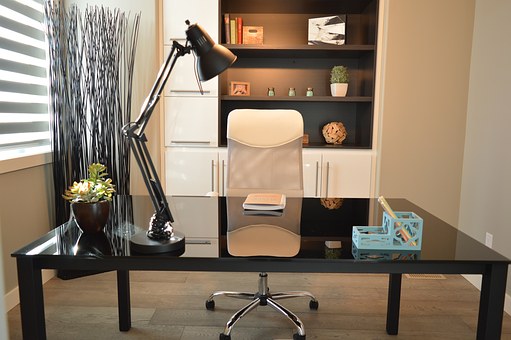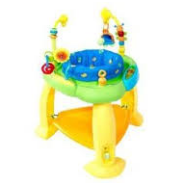Related Post
Due to advancement in the level of technology, it has become so easy for one to acquire vital information on how to handle various issues. The information obtained may be for ill-intended motives and locksmith is no difference to this negative motive. When dealing with locksmith, one need to be vary careful as you may end up using the service of those who may come to harm you in the long run.
As you know, a locksmith will always have a complete access to your house, car or business and this may leave you vulnerably exposed if the service is not done by a none reputable entity and if not done in a proper manner. Therefore, one needs to consider the following when choosing a reputable locksmith.
Approval from Recognized Institutions
When you want to get the service of a locksmith, you need to get the approval of the concerned institutions. Institutions like business bureau or MLA (Master Locksmith Association). The business Bureau recommended locksmith will only refer you to companies which do not have any unresolved cases and therefore giving you a good locksmith company.
MLA will also recommend only those companies which have been vetted and regularly inspected and could not have been trading if it has a bad reputation.
Consider years of Operation
 When you want to choose a reputable locksmith you need to take into account the years a given company has been operating. The companies which have been in operation will give you an opportunity to check on their historical background and know if they had been involved in any illegal activities. How long the business has been using its name should also help in determining if actually, it’s a reputable company.
When you want to choose a reputable locksmith you need to take into account the years a given company has been operating. The companies which have been in operation will give you an opportunity to check on their historical background and know if they had been involved in any illegal activities. How long the business has been using its name should also help in determining if actually, it’s a reputable company.
The company which frequently change its name may raise the fear that they are abandoning the initial name to hide their negative image or illegal activities they are involved before.
Consider the level of Investment
When you are choosing a locksmith company one need to consider the resources owned by the companies. Companies which have a huge investment may not likely be involved in negative activities as it may take them time to relocate to another area of operation considering the costs that will be involved for such relocation to take place.
Therefore, this type of companies is preferred to a small and mobile locksmith companies.
Seek recommendation from third parties
When looking for a reputable locksmith company one need to seek a recommendation from other people and entities which might have been in contact with some locksmith companies.
Ask trusted entities or families on the services they were given the companies they dealt with before and if they were happy with the service. If there is a company which has been recommended by many, then that should be a reputable company.
Understand if the company is insured
This will help you understand if the cost of insurance is enough to get you covered in case of anything. Insured businesses are also unlikely to get themselves into illegal activities as they are being regulated by the insurer who inspect them before insuring the business.
Conclusion
 Determining the company to offer the locksmith service is very import because some companies are riskier dealing with than actually being without the locks. They can later come to harm you with the information obtained during service delivery. So be careful to know exactly which one is best for you.
Determining the company to offer the locksmith service is very import because some companies are riskier dealing with than actually being without the locks. They can later come to harm you with the information obtained during service delivery. So be careful to know exactly which one is best for you.
It takes a responsible person to successfully keep a cat. The many years that humans have domesticated cats have made them completely reliant to humans. They rely upon humans for their food and company. At times, it becomes very hard to keep up with their feeding schedule, given how a day might be dynamic. To the rescue comes the automatic cat feeder, a machine that can be scheduled to feed the cat at given times of the day. These amazing machines come in all shapes and sizes, making sure that they cater for your cat’s needs. See their rankings here to ensure that you get the best. Below we take a look at the advantages of feeding your cat with an automatic cat feeder.
Why you should get an automatic cat feeder
Better time management
The main reason one would get an automatic cat feeder is to feed the cat whenever they are busy elsewhere. Many people these days work in offices that require them to be in attendance for the better part of the day. Taking into consideration the traveling to and from the office, the cat is pretty much left alone during the day. Therefore an automated machine that can be programmed to feed the cat at a given the time of day would be great, as it allows the cat owner to take care of their pet even though they are away.
Ration the intakes
In the olden days, cat owners would simply leave a bowl full of cat food and trust the cat to ration itself. The truth is, cats are not intelligent enough to know that they should save up for future meals. This made them overeat, leading to eating disorders. So with a proper automated feeding machine, one can easily instruct it to release a given amount of food at given intervals, making it easy to control the amount of food the cat eats at a go.
Ensure all pets get their share
This is for people with multiple pets, say several cats or e ven a cat and a dog. Eventually, their paths will cross, and they will end up fighting for food. Usually cats can easily share their meals but at sometimes, they might fight for it, and the weak one might end up not getting anything to eat. Some automatic feeding machines have the capability to read chipped tags on pets, and depending on the configuration, only open a lead that covers the food so that certain pets cab eat at given times.
ven a cat and a dog. Eventually, their paths will cross, and they will end up fighting for food. Usually cats can easily share their meals but at sometimes, they might fight for it, and the weak one might end up not getting anything to eat. Some automatic feeding machines have the capability to read chipped tags on pets, and depending on the configuration, only open a lead that covers the food so that certain pets cab eat at given times.
Congratulations on your decision to grow your team and work from a single location! You have been working with a team who had been posted all across and operating through virtual offices, now is the time to get all of you together under one roof and work with each other. Any company, to function in a professional manner, will require a proper office set up. This will also help in increasing and enhancing the brand value of the company.
 Depending on the type of business that you are running, your office space should be selected accordingly. If your business requires your employees to work at individual workstations with the help of a laptop and a telephone connection, you may look for offices that are medium sized, can accommodate the employees in their workstations and have a meeting room, pantry area, and attached washroom. If your employees are engaged in creating work such as developing art then you will have to hire a bigger place where individual workstations may not be required.
Depending on the type of business that you are running, your office space should be selected accordingly. If your business requires your employees to work at individual workstations with the help of a laptop and a telephone connection, you may look for offices that are medium sized, can accommodate the employees in their workstations and have a meeting room, pantry area, and attached washroom. If your employees are engaged in creating work such as developing art then you will have to hire a bigger place where individual workstations may not be required.
Office space for rent
choice of the furniture
in any office space, try to include furniture that has multiple usages. Going by the modern day trends, employees do not prefer having individual workstations, desks, and chairs. You can look for chairs that are ergonomically correct and do not harm the physical health of the employee. In a case of tables and desks, you can look for cabinets that can be moved from one place to another and are lightweight in nature. For storage of files, art files and media objects such as video DVDs, etc. you can opt for wall cabinets.
Location of the office
If possible, look for office spaces that allow natural sunlight to flow inside the office premises. This will help you save costs on electricity and work under a natural environment. If you are hiring an office space that has a considerably large pantry area, try to arrange the place near to the windows. This will enable the employees to move around in the natural environment after having worked in the artificial set up for long hours.
Availability of the office staff
 Another important factor that should be taken into consideration is the availability of office staff for regular maintenance work such as cleaning of the office premises, technical support for telecom and internet facilities, security, etc. Keeping in mind the factors mentioned above, many companies have moved into office spaces
Another important factor that should be taken into consideration is the availability of office staff for regular maintenance work such as cleaning of the office premises, technical support for telecom and internet facilities, security, etc. Keeping in mind the factors mentioned above, many companies have moved into office spaces





